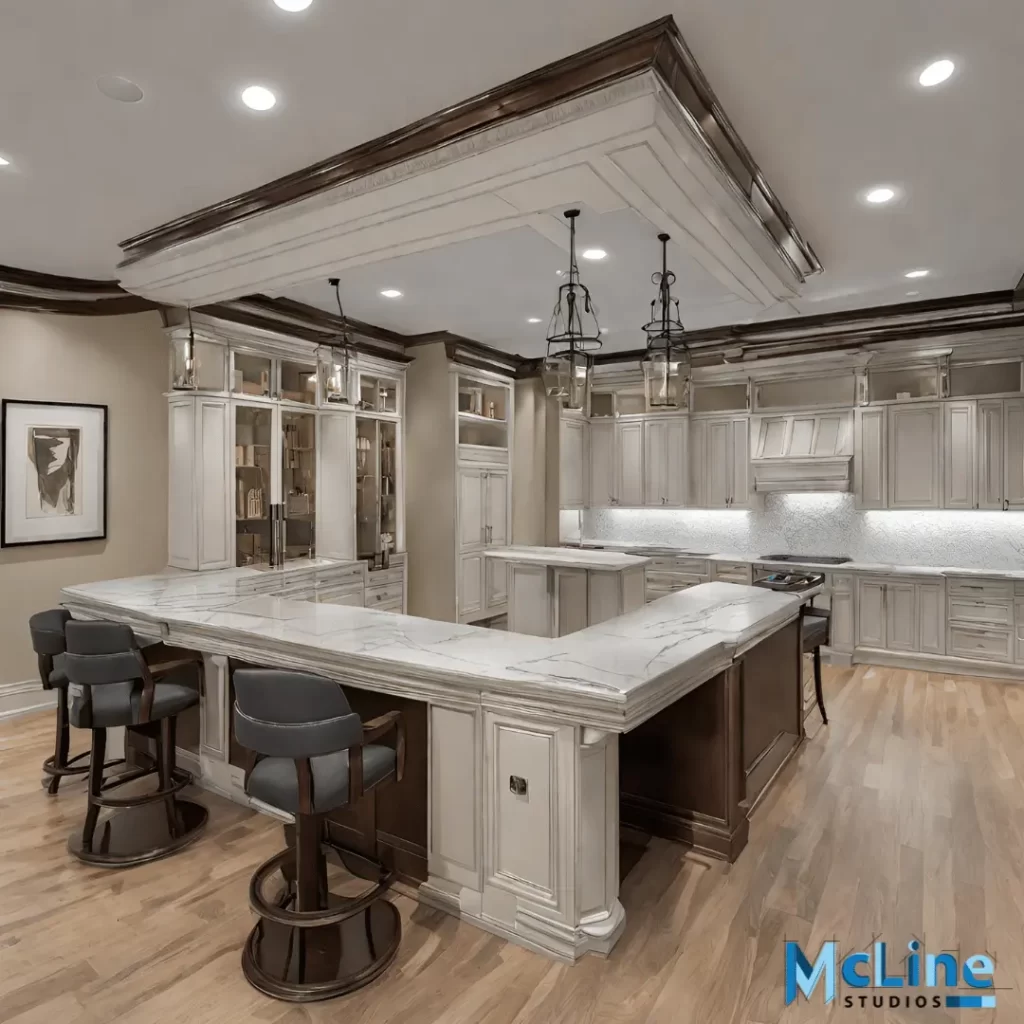In the world of woodworking and cabinetry, precision and attention to detail are a must. Cabinet shop drawings are crucial in ensuring these qualities are maintained throughout the design and manufacturing process. These detailed plans serve as a roadmap for craftsmen, carpenters, and manufacturers, providing a comprehensive guide to creating custom cabinets that meet the client’s specifications.
In this article, we will delve into what cabinet shop drawings are and explore the key considerations to keep in mind when working with them.

What are Cabinet Shop Drawings?
Cabinet shop drawings are detailed plans that meticulously outline the specifications for constructing and assembling cabinets. Drafted by cabinetmakers or designers, these drawings serve as a comprehensive guide for manufacturers and installers, ensuring precision in fabrication and installation processes.
The drawings encompass crucial details such as precise dimensions for each cabinet component, material specifications including wood species and finish, joinery specifics, construction methods, and hardware details like hinges and handles. Additionally, they provide instructions for finishing processes and step-by-step assembly guidelines, often accompanied by diagrams.
Including cut lists, and enumerating the required components with dimensions, further streamlines the manufacturing process. Ultimately, cabinet shop drawings play an integral role in minimizing errors, facilitating efficient communication between stakeholders, and ensuring the final product aligns with both the designer’s vision and client expectations. Through their comprehensive nature, these drawings contribute to the seamless execution of cabinet projects, promoting accuracy and adherence to specifications throughout the production and installation stages.
What to Include in Cabinet Shop Drawings?
Cabinet Shop Drawings serve as a crucial communication tool between designers, architects, and cabinet makers. Here are some key things to include in cabinet shop drawings:
- Dimensions: The overall dimensions of the cabinet and any interior compartments should be clearly labeled. This includes width, depth, height, etc.
- Materials: Indicate what materials will be used for the cabinet construction. This includes wood species, finishes, countertop materials, hardware, etc.
- Cabinet Fronts: Provide detailed drawings of any custom cabinet doors and drawer fronts, including dimensions, profiles, and finishes.
- Interior Layouts: Drawings should show the interior layout and any shelving, dividers, pull-outs, etc. Label dimensions and shelf spacing.
- Hardware: Specify hinges, pulls, knobs, and any other hardware that will be installed. Include brand/model if needed.
- Joinery Details: Drawings should indicate how cabinets will be assembled – type of joints, reinforcements, fasteners, etc.
- Edges & Trim: Note edge profiles and trim details like crown molding.
- Toe Kicks: Dimensions and details for any recessed toe kicks.
- Accessories: Note any accessories like roll-out trays, cutlery dividers, appliance garages, etc.
- Sink & Appliance Cutouts: Dimensions for sink base and appliance cutouts if needed.
- Installation: Indicate if any blocking or specific installation requirements are needed.
- Notes & Specs: Include any special notes or specifications needed for construction.
The drawings should provide all the details needed for accurate fabrication and installation of the cabinets. Being as clear and thorough as possible will help avoid errors or miscommunications with the cabinet maker.
Importance of Cabinet Shop Drawings
Cabinet shop drawings are an essential part of the cabinetmaking process. They provide detailed illustrations and measurements that guide cabinetmakers in constructing and installing custom cabinetry. Shop drawings translate the designer’s vision into an actionable plan that cabinetmakers can follow precisely.
They indicate the dimensions, joinery, materials, finishes, hardware, and assembly methods for fabricating the cabinets. Accurate shop drawings help ensure that cabinets are built to the proper size and specifications. They also facilitate communication between the designer, client, and cabinetmaker so that everyone is on the same page regarding the final product. Well-executed shop drawings minimize errors, reduce material waste, and promote efficiency in the workshop.
For custom cabinetry jobs, taking the time to create comprehensive shop drawings is time well spent, as it leads to high-quality final cabinetry that matches the designer’s intent and the client’s expectations. In summary, meticulous cabinet shop drawings are invaluable for smooth and successful cabinet construction.
Interpretation
In conclusion, delving into the world of cabinet shop drawings reveals a crucial aspect of the woodworking and cabinetry industry. These intricate blueprints serve as the roadmap for bringing design concepts to life, ensuring precision and accuracy in the manufacturing process. As we’ve explored the key elements and considerations in cabinet shop drawings, it becomes evident that attention to detail, clear communication, and collaboration are paramount for successful outcomes.